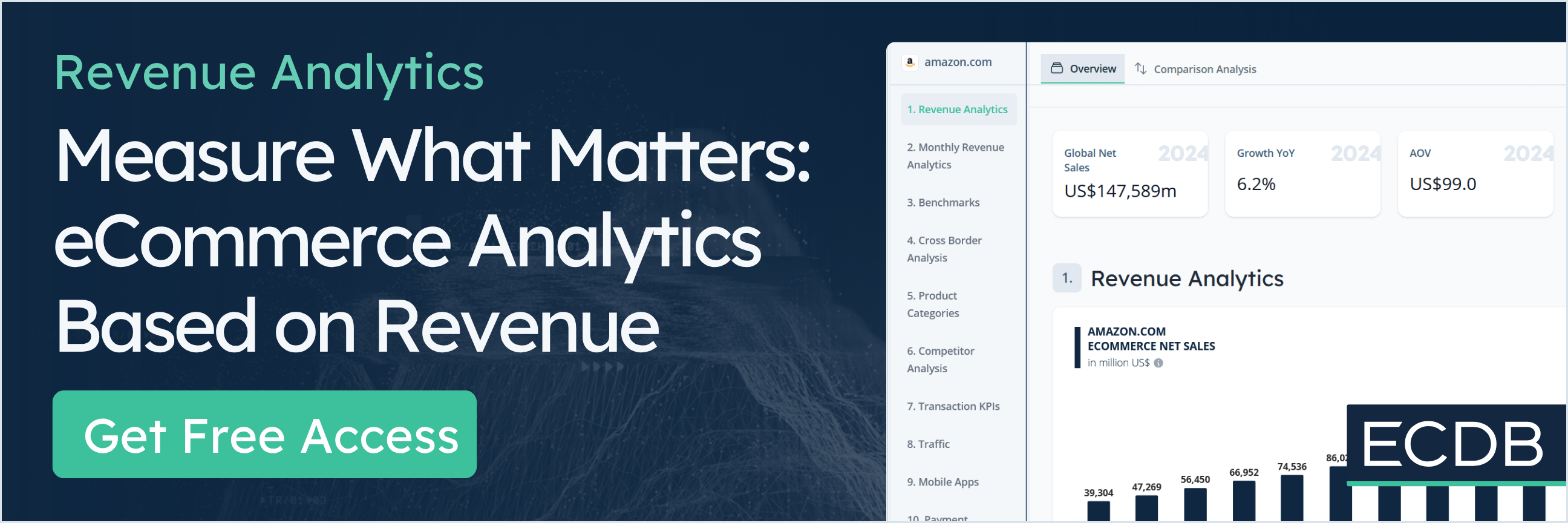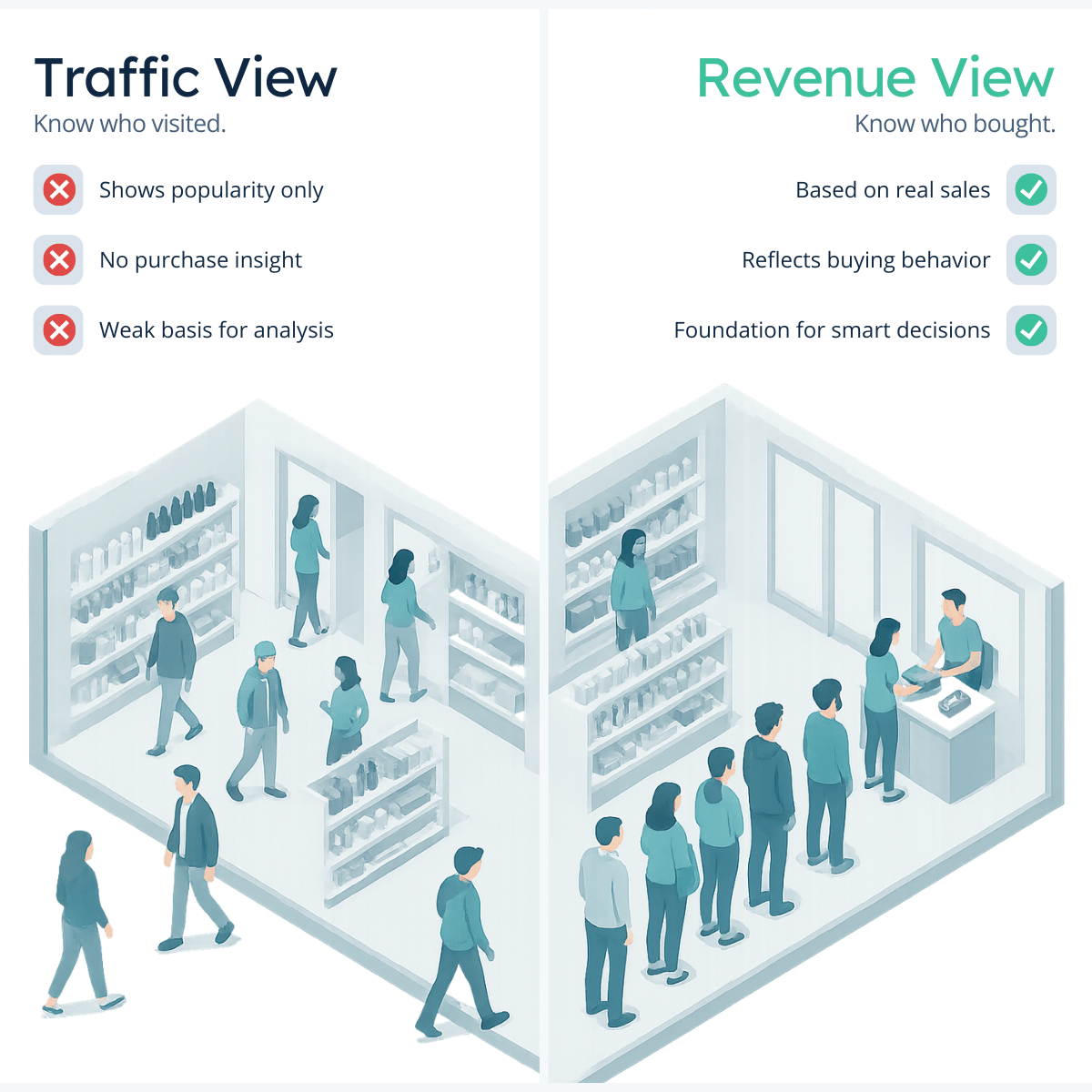A solid eCommerce Market Intelligence foundation is at the heart of nearly every successful use case. Seeing how the market is moving and how other retailers are performing helps set clear, achievable goals – and gives you a better sense of where you stand realistically.
Many data services claim to offer reliable company evaluation and performance comparisons based on website traffic analysis tools. But traffic is only half of the story. What counts most is the purchase, which means revenue is a much more useful measure.
Traffic Scrapes the Surface, Revenue Dives In
It's true that we live in an attention economy where clicks and traffic represent a platform's buzz and recognition. How many of those clicks and visits count, however, when users never actually click through to make a purchase or abandon their cart at the last minute?
This is why revenue is the more reliable indicator of true business success. Perhaps a site is in the news a lot because it has struck a chord with global audiences. Users may become curious and visit the site several times but don’t trust it enough to make a purchase. Or, they buy something but have such a negative experience that they never buy again.
Is that platform then more successful than one that never generated traffic hype but attracts a consistent stream of loyal consumers who purchase several times a year? Of course not!
Revenue Is the More Tangible Metric for Practical Analysis and Solutions
Why is revenue the much better indicator of success? Revenue reflects the quality of an eCommerce approach. It goes far beyond the quantitative lens because a frequently visited site can be misleading in terms of actual, tangible results.
Yes, a lot of traffic means that a larger audience is exposed to a site’s advertising, but what does advertising ultimately aim to achieve? Sales that result in revenue.
On top of that, breaking down the components of revenue enables an even more detailed analysis. Key performance indicators (KPIs) are a prime example of this.
For instance, from retailer revenue you can extract the average order value (AOV), return rate, and discount rate. Breaking this down further will provide you with information on the number of buyers and their buying frequency – all much closer to the consumer reality than mere website visits.
Traffic Is a Minor Part of a Much Larger Picture
Leveraging revenue and its components provides answers to the important questions in business. That’s the core principle behind ECDB eCommerce Market Intelligence. It also enables cross-analysis of categories, countries and business segments to compare performance over a broader range of indicators.
The revenue perspective brings to light:
Trends over time and reasonable forecasting
Success and failure of business segments
Market leadership; practical, measurable, comprehensive
Reasons for performance through KPI analysis
Consumer interaction (AOV, returns, buying frequency) throughout time
It’s the difference between guessing and knowing.
Traffic may tell you who showed up – but revenue tells you who stayed, trusted, and paid. For businesses serious about growth, data analytics need to go beyond the surface.
Practical Example: How Traffic and Revenue Rankings Diverge in Positioning and Inclusion
Let’s look at a real-life example to clarify. Popular website traffic analytics sell an eCommerce companies list where Temu ranks global second. In terms of revenue, Temu is actually on the thirteenth spot.
The traffic view excludes household eCommerce names in China altogether, such as Pinduoduo, Douyin, JD.com and Taobao. They all generate GMVs of several hundreds of billion dollars and belong to the largest eCommerce companies in the world. But they are of no significance in the traffic ranking.
That is why ECDB’s eCommerce Market Intelligence uses revenue as the core measure of its eCommerce data analysis. Traffic is just one small part of the whole edifice, which finds its ultimate expression in the ECDB revenue equation. Our entire methodology is built around purchase-based metrics – not just attention and visits.
Conclusion: From Surface Metrics to Strategic Insight
Relying on traffic alone means making decisions based on attention, not action. ECDB eCommerce Market Intelligence focuses on what truly matters - revenue. By prioritizing purchase-based data over superficial metrics, we help businesses uncover patterns, benchmark performance, and identify real opportunities for growth. Whether you’re evaluating competitors, entering new markets, or refining your strategy, revenue-driven insight provides the foundation for meaningful, data-backed decisions.










